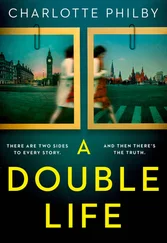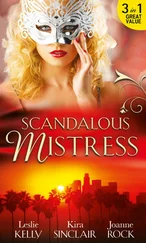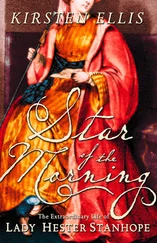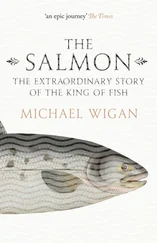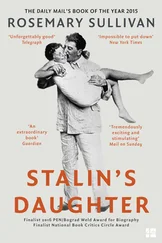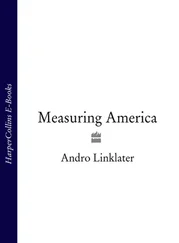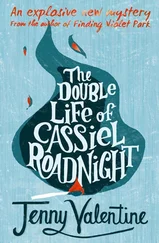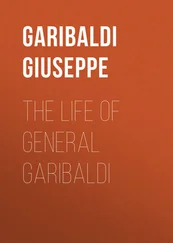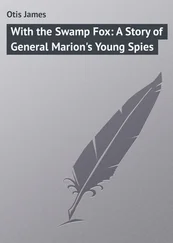One immediate motive in approaching the Spanish again was, as always, financial. His salary as general was now $225 a month, and on top of that he received generous expenses, and a special allowance of $8 a day while negotiating Indian treaties. Wilkinson estimated that altogether he received something close to $4,000 a year from the army. But tighter regulations and constant travel clearly reduced the scope for payoffs from contractors, and he had received nothing from the Spaniards since the notorious $9,640 had arrived covered in sugar and coffee. Meanwhile, he had one son at Princeton— Ensign James Biddle Wilkinson having followed his father into the army—and a wife whose nervousness grew more pronounced the longer he was away from home, and whose demands he could not deny.
Psychology must also have played its part. For two years Wilkinson had been sidelined by Henry Dearborn, behavior guaranteed to wound his vanity and trigger a vicious urge to retaliate. Furthermore, he was in his late forties, a midlife point when unsatisfied men are prone to dreams of sudden transformation from routine to excitement. Finally there was Mexico. Ever since Philip Nolan’s first report of the road to Santa Fe, it had occupied his mind, and the key to his serpentine activities lay in the extraordinary, meteoric career of the young Irishman.
BORN IN BELFAST, NORTHERN IRELAND, in 1771 and destined to be buried in Texas before his thirty-first birthday, Nolan had at the age of twenty exchanged the imaginative bookkeeping practiced in Wilkinson’s Lexington store and in his shipping agency in New Orleans for the more daring life of a horse trader, rounding up wild mustangs in Texas and Chihuahua for sale in Louisiana and Natchez. Such activities required a passport from the governor of each region. Wilkinson, Nolan’s mentor, persuaded Miró to grant him his first permit to import horses for the Louisiana militia, but Nolan’s happy relish for adventure made it easy for him to procure these valuable documents—“He is,” said Carondelet, “a charming young man whom I regard very highly,” and the governors of Texas and New Mexico agreed. Nor was his appeal limited to European Americans.
After his goods and money were stolen on his first expedition in Texas, Nolan lived for two years with the notoriously aggressive Comanche and “acquired a perfect knowledge” of the sign language they used to communicate with other tribes in the Southwest. Even Daniel Clark Jr., notoriously cold and calculating in his judgments, was seduced by Nolan’s careless courage and joyful spirits, assuring Thomas Jefferson that he was someone “whom Nature seems to have formed for Enterprizes of which the rest of Mankind are incapable.” Only Gayoso, after an initial friendship, suddenly realized that his repeated trips into Spanish territory might serve another purpose and issued an urgent warning to his fellow governors that Nolan was “popular and enterprising” but at the same time “a dangerous man and a sacrilegious hypocrite.”
Yet the Irishman never deviated from his loyalty to the general, whom he called “the friend and protector of my youth.” Just before leaving on his first horse-trading expedition to Texas, he promised Wilkinson, “ I am wholly yours until I do the business of the season,” and just before his last trip he told a friend, “Whatever discoveries I can make shall be carefully preserved for General Wilkinson.” By 1797, his information about the trail to Santa Fe and Mexico had begun to excite his mentor’s volatile imagination.
This was the background to Nolan’s calculated friendship with the trusting Ellicott. The horse trader shared his intelligence about Spanish intentions and troop numbers and received in return private instruction in the art of navigation from the United States’ foremost mapmaker. “I have instruments to enable me to make a more correct map than the one you saw,” Nolan told Wilkinson before his next trip to Texas. “Ellicott assisted me in acquiring a more perfect knowledge of astronomy and [telescopes]; and Gayoso himself has made me a present of a portable sextant.”
That promise of a more accurate map of the trail to Santa Fe suggests the direction of Wilkinson’s thoughts. As a soldier, he valued nothing so much as reliable information about ground that might become strategically important. In 1801 Nolan was killed by a Spanish patrol in Texas to prevent him from exploring further, but his maps had planted the seeds of another ambition. The general’s dream of a Mississippi republic might be over, but the idea of another, richer empire farther west was taking root.
THERE WAS NOTHING IMPULSIVE about his decision to approach Vizente Folch, governor of West Florida. Wilkinson already knew him as Miró’s nephew, and another encounter in 1803 while working on the Indian frontier had convinced him that he could trust Folch. Their meeting in New Orleans in February 1804 was carefully minuted in Folch’s report to his immediate senior, the captain general in Havana, Marqués Salvador de Some-ruelos. Having extracted a pledge that their conversation should be kept utterly secret, Wilkinson had made “various reflections” on the strategy Spain should pursue following the Louisiana Purchase. Folch was wary, suspecting that this might be an attempt to extract information on Spanish intentions, and so asked Wilkinson to write out his ideas.
The suggestion was accepted, but then Wilkinson raised a matter that caused him “considerable embarrassment”— his salary of two thousand dollars a year as a Spanish agent had not been paid for ten years. He would soon travel north to report to Thomas Jefferson. While in Washington, he would discover not only the administration’s plans for Louisiana but, as Jefferson’s friend, the president’s innermost thoughts. Before he left New Orleans, Wilkinson suggested, Spain should pay him the twenty thousand dollars he was owed, “for the services which I shall render and more particularly to indemnify me for the eventual loss of the office which I hold and which probably it will seem necessary for me to abandon in case of hostilities.” In return he would commit his reflections to paper and report back after his meetings in Washington.
That Folch should have taken seriously the request for such a gigantic sum says much for the value of the general’s past services. Nevertheless, the governor explained, he could not personally pay so much—at this, Wilkinson apparently lowered his price to just ten thousand dollars—but Casa Calvo, the aristocrat who hated the French, was still in town, and he had one hundred thousand dollars from Mexico. On learning this, Wilkinson suddenly became extremely difficult, forbidding Folch to approach Casa Calvo because the aristocrat’s secretary, Andrés Arnesto, represented a security risk. “I am a lost man,” he declared with operatic intensity, “if the secretary should learn what I propose.”
Even through the measured language of Folch’s report, it is clear that Wilkinson wanted a personal interview with the man holding the money. His maneuvering succeeded, and the following Sunday Wilkinson met Casa Calvo face- to-face and succeeded in wringing from him the promise of an immediate payment of twelve thousand dollars. During the interview, the general not only found it convenient to use Arnesto as an interpreter but praised him lavishly for his “wisdom and probity.”
“Reflections,” the paper Wilkinson wrote for Folch and Casa Calvo, was the third strategy document he had prepared for Spain’s colonial authorities and, like its predecessors, demonstrated why he deserved the confidence they placed in him. With great clarity, he delineated the consequences of the Louisiana Purchase, that the irresistible drive of settlement would now sweep westward across the Mississippi, unless Spain could stop it. In the long term, the most effective way was to divert the torrent southward by granting the United States the economically important Floridas in exchange for Louisiana. To sweeten the deal, Spain should offer to repay the fifteen- million-dollar price of the purchase and any other expenses the United States might have incurred, otherwise Mexico stood in danger of being overrun by “an army of adventurers similar to the ancient Goths and Vandals.”
Читать дальше



